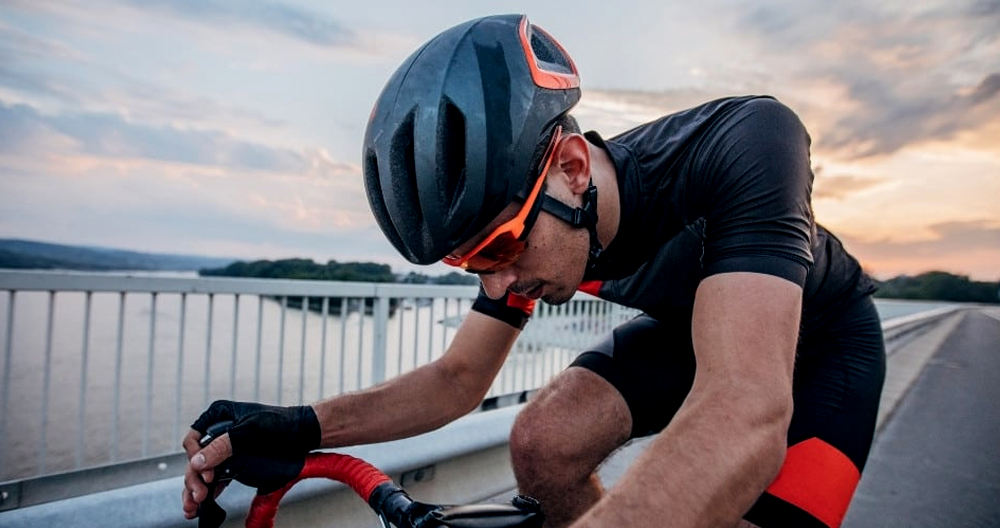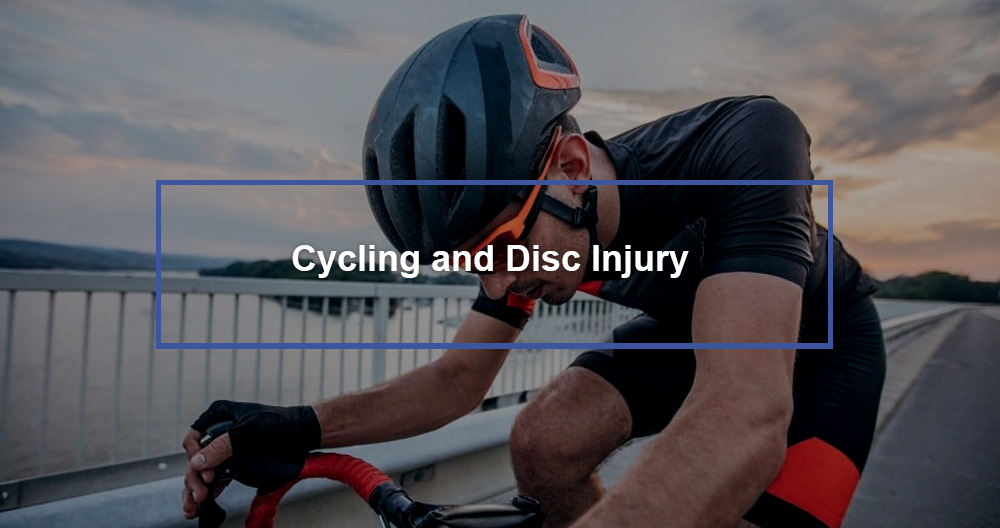Disc Injury and Cycling : What You Need To know
It’s not just older people who have back pain. A disc herniation has caused some of the most elite athletes around the globe to retire or have to take time off from their sport.
This injury can affect the cervical spine (the neck), as well as the lumbar (the lower back), and can cause severe pain. A major factor in disc failure can be cycling. This is because of repetitive lumbar bending under moderate compressive loads. Depending on the severity of your injury, symptoms may include back pain or leg pain, weakness in the affected legs, and tingling. X Rays are typically negative.
Joanna Zieger is a professional triathlete that suffered from a disc herniation many years ago. It affected her entire season. After a fall at the 2010 Giro d’italia in Italy, Carlos Sastre sustained a disc injury. After enduring severe pain and inability to race or train for nearly a month, he was able to race the Tour de France after a thorough rehabilitation.
The spine is made from many small bones, called vertebrae. They are placed on top of each other and form the vertebrae. The vertebrae contain many small bones that are stacked on top of each other. These bones are called vertebrae. Nerve roots run between them to provide support for various parts of your body. The discs, which are mostly made from water, lie between each spinal vertebrae throughout the length of the spine. They serve multiple purposes.
They allow slight movement between the vertebrae, they hold the vertebrae together, and they act as shock absorbers. They have two layers: a hard outer layer and a soft inner layer. The outer layer of the disk can become brittle over time, and its water content may decrease. When the tough outer layer bursts, the jelly-like substance of the disk can spill out. This can cause pain and numbness to the spine, arm, and neck. This pain can follow the route of the entire nervous system.
An MRI or CT scan is essential to confirm the diagnosis. If the studies show no disc damage, and all other injuries have been excluded, then the diagnosis will be a frustrating “Non Specific Low Back Pain.” This is caused by the cyclist’s position and tissues being stretched for long periods of time. This reduces these tissues’ ability in stabilizing the spine. This causes uncontrolled movement and loss of control in certain areas of the back. It can also lead to disc herniation. When the spine is not supported properly, the muscles become weaker and begin to shear the discs.
The goal of treatment should be to strengthen and increase mobility in the hips. (The hips are the most restricted part of a cyclist’s body.) Because there is too much motion in your spine, exercises that are focused on range of motion are counter-productive. Strengthening the spine-supporting muscles is recommended. Strengthening the spine muscles should be endurance-based. This is because they can become weaker if they are justify in an abnormal position. To ensure that the spine is in the neutral position you desire, it is important to use a bike position.
If an injury is not able to be treated, surgery might be the solution. This procedure is safe and has seen improvements in safety. A discectomy refers to the procedure where the disc is removed from between the vertebrae. This allows the nerve to relax and reduces pain. Rehabilitation is crucial as the area may be re-injured. The case-by-case decision of an orthopedic surgeon and a neurosurgeon about whether surgery is necessary will depend on the individual.
What are the things I should consider when cycling with an injured disc?
It is important you observe certain points before and after cycling.
Test drive
Test riding a bike that has been modified is an important step before buying it. You can have a test ride on the Van Raam track with one of our technical advisors to help you decide the best bike for you. Technical advisors can help you practice on the ground, gravel, hills and curves. Book a test drive now. Call your local dealer to arrange for a test-ride.
The bicycle should be adjusted correctly
Adjusting the bike properly is essential to optimize the training of your back when you cycle. You should adjust the handlebars as well as the seat height to ensure that your upper body is in a slightly bent position. The hip should be pointed forward. The user manuals of all our bikes will show you how to adjust it.
Correct posture
It is crucial to maintain a healthy spine during cycling. The area surrounding the lumbar spine receives the most training benefits. If your pelvis is tilted forward while cycling, the back muscles become pretensioned. This allows the spine to return to its natural S shape. The deep muscles between the vertebrae are strengthened by pedaling. The muscles between the vertebrae can be difficult to train.
Place your legs and arms correctly on the bike
Bicycling requires the legs to be slightly bent and not fully depressed at the bottom of the pedal. The knee should not pull more than 90 degrees when the pedal is in the higher position. This is crucial to protect your knee joints.
The ideal angle for the relationship between arms/back is 90 degrees. This allows for optimal muscle loading, and protects the wrists and wrists from overpressure. Cycling should not force the elbows through, but they should be slightly angled. The ideal position for adjustable handlebars can be achieved when the arms and wrists are slightly angled but not bent.
Frequently asked Questions About Cycling with Herniated Disk
Is it possible to bike with hernia?
Yes, cycling can be good for you. One of the best things about cycling is the fact that it strains and strengthens the small muscles in the back. These muscles cannot be stimulated or reached during normal gymnastics. It is possible to stabilize your back muscles by cycling frequently, for at most one to two hours per week, with no additional back training.
It is crucial to pay attention to your body. Don’t do anything that doesn’t feel right. You should consult your orthopaedist. The combination of biking and back training can be used to make up the shortfall in exercise due to modern lifestyles.
Can cycling be good for the back?
A bike ride is healthy. If you are upright and straight, it can help with back pain. The lower back and the smaller muscle groups of the spine are particularly well trained.
How soon can I start cycling again after having a hernia repair?
A disc operation can be completed in six weeks. After that, you can begin to cycle. Level cycling in this sport is best done with the steering wheel suspension and saddle in an upright setting. Because the sport is safe and does not cause any damage to the musculoskeletal or muscular system, it is not advised that you ride in rough and tumble conditions. Indoor cycling on an Exercise bike is recommended in order to avoid unevenness.



